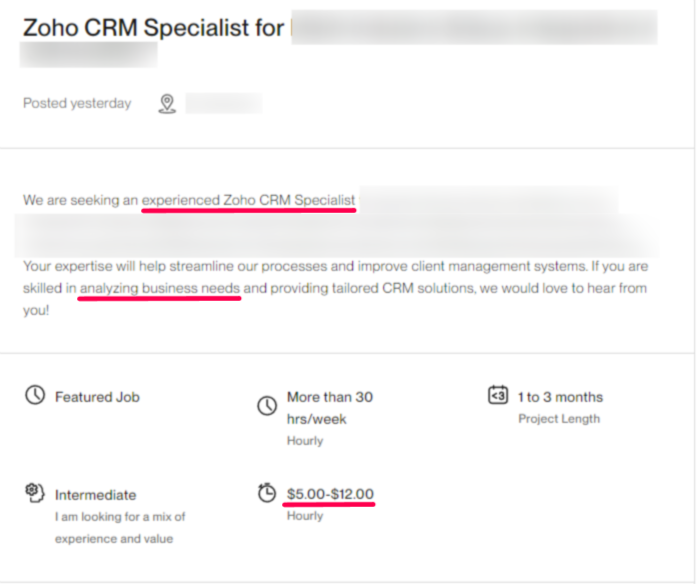Table of Contents
Two of our most recent (and very decent!) corporate customers moved their business to United Parts of Chicago from fellow Partners utilizing the hourly rate billing model. On the one hand, we like to have that little advantage over our competitors. On the other hand, I want to explain why it happens to our current and potential customers so they will understand the logic behind our billing model.
Perhaps the most significant benefit of hourly billing is its familiarity. IT companies, MSPs, and other pros are used to that model, and clients in general are conditioned to pay an hourly rate. Some clients believe hourly rate-based billing provides a straightforward way of comparing one service provider to another (it is not, but there’s more to the table). For service providers, hourly billing may be profitable, mainly if they use cheap labor.
However, such a model brings multiple drawbacks to the IT consulting process on both ends.
“A Vassal of Your Vassal Is Not Your Vassal”
Or, to break down the metaphor, your MSP's employees aren't your employees.
Your MSP is a separate business entity; you have no control over its time and efficiency. When you’re billed by hours, you’re relying on its estimate of its own efficiency.
In the corporate world, the hourly rate is a cornerstone due to the paradigm where an employee sells their time to the employer. The employee is presumed to be active (and productive) during their working time, being in a controlled environment with predictable outcomes. More time equals more outcomes, thus generating profit—or at least it’s supposed to be. In reality, people cannot be equally productive for eight hours due to their biology (the ants can, though).


Regarding software implementation and consulting, the quality of the outcome is not directly tied to the time spent. A highly skilled professional might be able to resolve an issue with better quality and in less time than a less experienced provider. This lack of direct correlation between time and quality can lead to overcharging, undercharging, and scope creep. And it is a concern: we’ve had multiple clients who weren’t happy by “running out of hours” with our competitors. Fair enough, they paid for the time, thinking they were paying for outcomes.
The quality of the outcome is not directly tied to the time spent.
It’s well-known that hourly billing encourages performance to be measured against financial targets rather than the value provided to the client. A provider’s success becomes determined by their billable hours rather than their skills, experience, or innovation. In the ideal reality, the value provided to the client should be the primary measure of success, not just the number of hours worked.
I’ve hear many questions like “how many hours that would cost me” from the customers after they briefly describe the issue.
There’s no way to estimate besides some generalized “common sense” without a detailed evaluation of the platform, the data, and the issue. In rare cases, the problem is so simple that it can be evaluated precisely on the spot. In most cases, the problem that the customer wants to resolve is just the tip of the iceberg; hence, the discovery phase is mandatory.
It’s not because we want to milk the customer. It’s because of the multi-faceted, complex nature of the platforms we’re dealing with.
You Can’t Predict How Many Hours You’ll Need
Unless the Problem Is Very Basic and Straightforward
Budget uncertainty is unavoidable in the hourly-based billing model because neither party can predict the exact number of hours required to address the issue or deliver the results—unless the problem is very basic and straightforward. A client paying by the hour will have the budget depending on the provider’s ability to understand and solve the problem. That affects the market in general, because clients became anxious about budget overruns (rightfully though) and, to mitigate that anxiety, tend to lower the hourly rates beyond the recognition:

One ain’t get no business analyst and/or system architect for $5-12/hour in the United States of 2024. Nope. Negativa. Nein.
Aim to Pay for the Results, Not the Time
If you are buying someone’s time, you’ll get someone’s time. Do you need it? Quite the opposite: you need results. When the provider knows they will get paid for delivering the results, they will be motivated to provide the verifiable, valuable deliverables as soon as possible, without even considering extending the delivery timeframe.
Why Is the Hourly Rate Still Popular Despite Its Many Drawbacks?
TL;DR: It’s Not That Bad, It’s Just Not the Answer to the Ultimate Question of Life, the Universe, and Everything
Well, so is the imperial system of units. “Just because it is here.” Traditions, people get conditioned to them. In the consulting industry, one of the main misconceptions is that the client “hires” the provider or MSP to deliver some results. But service providers aren’t employees; it’s an entirely different relationship model!
You’ll rarely hear something like, “I hired doctor XYZ to treat my ABC,” because people clearly understand that they are not “hiring” their doctors. They pay their healthcare providers for the results.
The same logic should apply to your MSP:
- Ask for the solution.
- Do the budgeting.
- Stick to the scope of work.
- Pay for the outcomes.
Well, is the hourly rate inapplicable at all? Of course it is not. It is actually great, but only for quantifiable jobs with precise measurements and predictable outcomes. A few examples include training sessions, teaching, data entry and normalization work, landscaping, reception, call center agents, and the list goes on — in other words, any work where the results are a direct function of the time spent.
Fixed fee budgets are the best for anything with unpredictable complexity or requires specific experience. Compliment the fixed budget approach with the Lean Agile methodology, where you get the results by the small portions with the corrections between sprints, and you won’t be disappointed.









